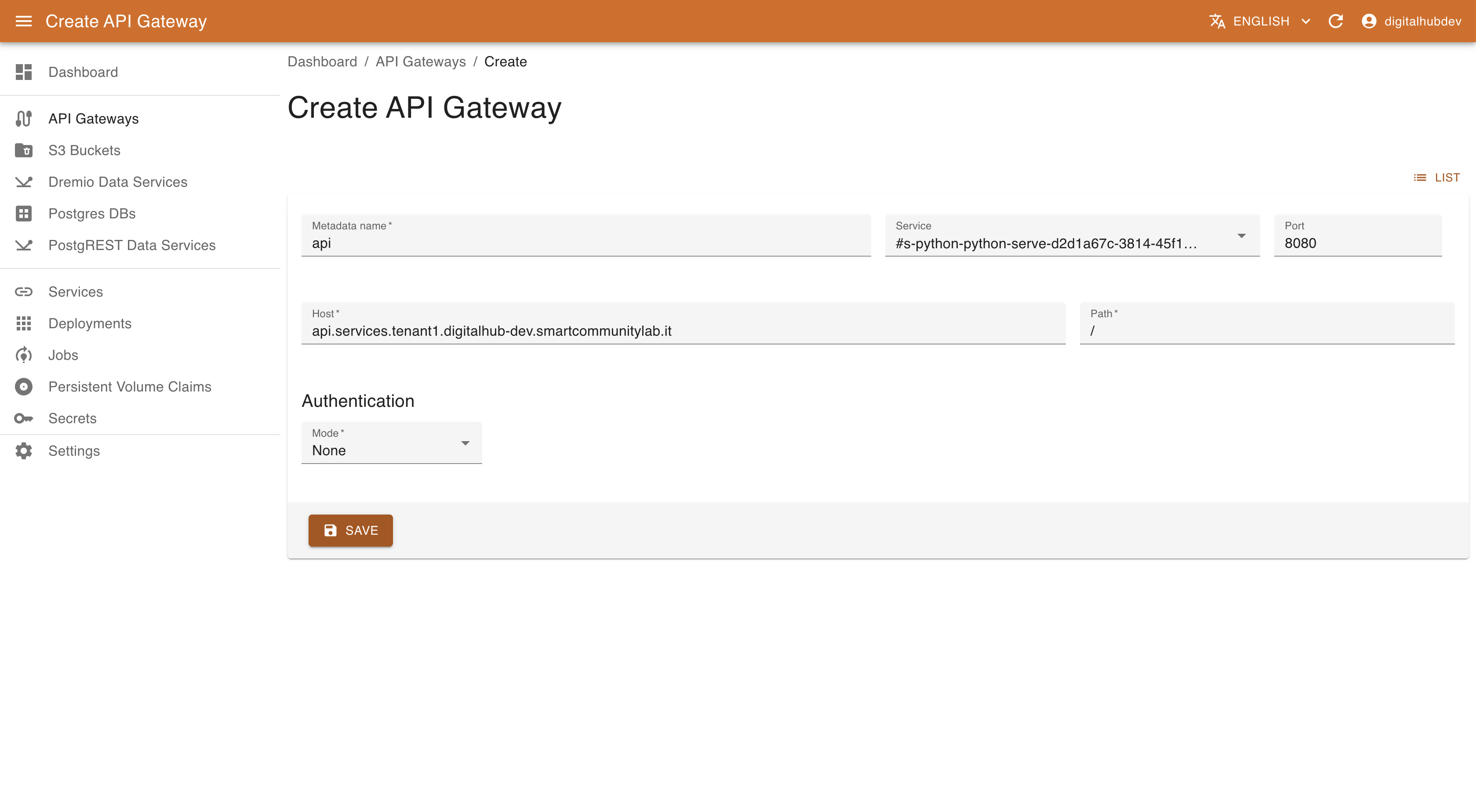Deploy and expose the model
Deploying a model is as easy as defining a serverless function: we should define the inference operation and the initialization operation where the model is loaded.
Create a model serving function and provide the model:
%%writefile "src/serve_darts_model.py"
import json
from zipfile import ZipFile
import pandas as pd
from darts import TimeSeries
from darts.datasets import AirPassengersDataset
from darts.metrics import mae, mape, smape
from darts.models import NBEATSModel
from digitalhub_runtime_python import handler
def init_context(context, model_key):
"""
Initialize serving context by loading the trained model
"""
model = context.project.get_model(model_key)
path = model.download()
local_path_model = "extracted_model/"
# Extract model from zip file
with ZipFile(path, "r") as zip_ref:
zip_ref.extractall(local_path_model)
# Load the NBEATS model
input_chunk_length = 24
output_chunk_length = 12
name_model_local = local_path_model + "predictor_model.pt"
mm = NBEATSModel(input_chunk_length, output_chunk_length).load(name_model_local)
setattr(context, "model", mm)
def serve_predictions(context, event):
"""
Serve time series predictions via REST API
"""
if isinstance(event.body, bytes):
body = json.loads(event.body)
else:
body = event.body
context.logger.info(f"Received event: {body}")
inference_input = body["inference_input"]
# Convert input to Darts TimeSeries format
pdf = pd.DataFrame(inference_input)
pdf["date"] = pd.to_datetime(pdf["date"], unit="ms")
ts = TimeSeries.from_dataframe(pdf, time_col="date", value_cols="value")
# Make predictions
output_chunk_length = 12
result = context.model.predict(n=output_chunk_length * 2, series=ts)
# Convert result to JSON format
jsonstr = result.pd_dataframe().reset_index().to_json(orient="records")
return json.loads(jsonstr)
Register it:
func = project.new_function(name="serve_darts_model",
kind="python",
python_version="PYTHON3_10",
code_src="src/serve_darts_model.py",
handler="serve",
init_function="init")
Given the dependencies, it is better to have the image ready, using build action of the function:
run_build_model_serve = func.run("build",
instructions=["pip3 install torch'<2.6.0' darts==0.30.0 patsy"],
wait=True)
Now we can deploy the function:
serve_run = serve_func.run("serve", init_parameters={"model_key": model.key}, labels=["time-series-service"], wait=True)
Install locally the dependencies:
# Install darts locally for testing (if not already installed)
%pip install darts==0.30.0 torch'<2.6.0' --quiet
Create a test input:
import json
from datetime import datetime
from darts.datasets import AirPassengersDataset
# Load test data
series = AirPassengersDataset().load()
val = series[-24:] # Last 24 points for prediction
json_value = json.loads(val.to_json())
# Prepare input data in the expected format
data = map(
lambda x, y: {"value": x[0], "date": datetime.timestamp(datetime.strptime(y, "%Y-%m-%dT%H:%M:%S.%f")) * 1000},
json_value["data"],
json_value["index"],
)
inputs = {"inference_input": list(data)}
And finally test the endpoint:
serve_run.invoke(json=inputs).json()
Create an API gateway
Right now, the API is only accessible from within the environment. To make it accessible from outside, we'll need to create an API gateway.
Go to the Kubernetes Resource Manager component (available from dashboard) and go to the API Gateways section. To expose a service it is necessary to define
- name of the gateway
- the service to expose
- the endpoint where to publish
- and the authentication method (right now only no authentication or basic authentication are available). in case of basic authentication it is necessary to specify Username and Password.
The platform by default support exposing the methods at the subdomains of services.<platform-domain>, where platform-domain is the domain of the platform instance.

Save and, after a few moments, you will be able to call the API at the address you defined! If you set Authentication to Basic, don't forget that you have to provide the credentials.